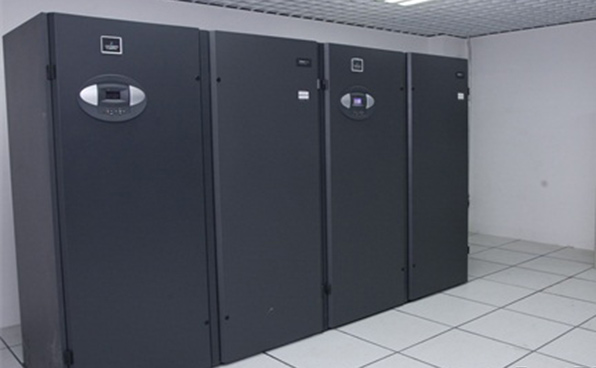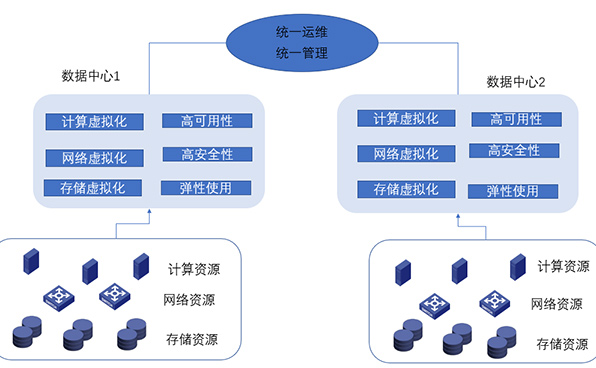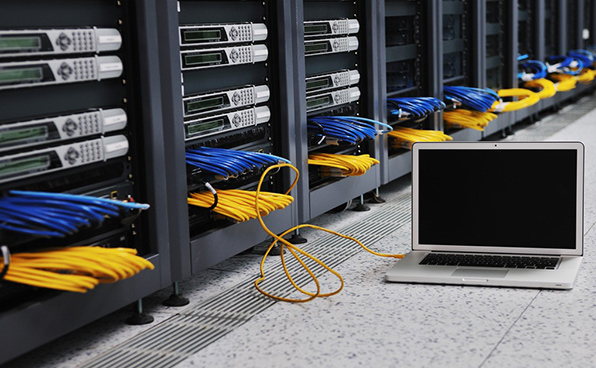
We Are Customer-Centric And Provide Customized Or One-Stop Full-Stack Solutions To Empower All Industries.
In The Early Days Of Data Center Construction, Most It Builders Did Not Pay Much Attention To The Technical Architecture Adopted, Thinking It Was Not That Important. The Focus Of Data Center Construction Is To Ensure The Stable Operation Of The Business System Carried, Provide A Good Operating Environment For Servers, Storage And Network Equipment, And Make It Less Likely For The Business System To “Go Down”. Therefore, Most Data Centers In The Early Days Were Designed With Chimney-style Architectures. Each Business System Would Be Equipped With A Set Of Independent Hardware Equipment, And The Data Was Completely Fragmented, Resulting In Very Low Equipment Utilization And No Resource Sharing. In Order To Cope With The Rapid Development Of Informatization And Improve Equipment Utilization And Flexibility, Cloud Computing Technology Has Been Widely Promoted And Adopted. Cloud Computing Can Provide Available, Convenient, And On-demand Resource Provision, And Has Gradually Become The Mainstream Data Center Architecture. At Present, Data Centers In Most Industries Have Cloud Computing Capabilities. Except For A Few Business Scenarios Such As Large-scale Databases, New Business Applications Are Basically Built Using Cloud Models, And A Large Number Of Existing Business Applications Are Constantly Migrating To Cloud Computing Environments. Running Application Systems In A Virtualized Environment Seems To Have Become A Normal Practice. In A Cloud Computing Environment, Server Virtualization Is One Of The Basic Cloud Computing Technologies.
Virtualization Software Vendors Are Gradually Transforming Data Centers Based On Physical Resources To Data Centers Based On Virtualized Resources, Effectively Controlling The Growth Of The Number And Scale Of Servers In Data Centers And Improving The Utilization Efficiency Of Servers. At The Same Time, The Characteristics Of Virtualization Systems Have Greatly Improved The Reliability Of Data Center Systems. In Particular, It Is A Qualitative Leap In The Business Continuity Of Data Centers In Terms Of Active Operation And Maintenance, Disaster Recovery Construction, And Fault Switching. At This Stage, The Large-scale Application Of Virtualization Technology Has Enabled Traditional Data Centers To Achieve Maximum Resource Integration And Sharing Without Changing The Centralized Architecture, But The Architecture Has Not Changed Much, And It Is More Of A Transformation Of The Service Model.


.
In Terms Of Security, There Are Various Solutions To Abnormalities:
1. The Resource Expansion Capacity Is Not Limited And Is Determined By The Size Of Nodes And Clusters. The Scale Of The Distributed Computing Center Can Be Expanded To Tens Of Thousands Of Nodes, And The Expansion Does Not Affect Online Business. Compared With Traditional Data Centers, It Is Very Flexible.
2. Business Is Deployed In A Distributed Manner On Demand, With High Resource Utilization And Low Cost, Flexibility And Convenience, And Elasticity. Enterprises Can Choose Computing Resources That Meet Their Needs According To Their Business Volume And Can Expand Capacity According To Business Changes In The Future, Which Can Greatly Reduce Initial Costs.
3. Data Services Between Data Centers Can Be Backed Up To Ensure Data Security And Prevent Data Center-level Failures And Disasters.

Reduce Equipment Costs And Enterprise TCO
Fast Deployment, Strong Manageability, Saving Operation And Maintenance Time
Improved Efficiency And Flexible Use Increase Utilization Rate